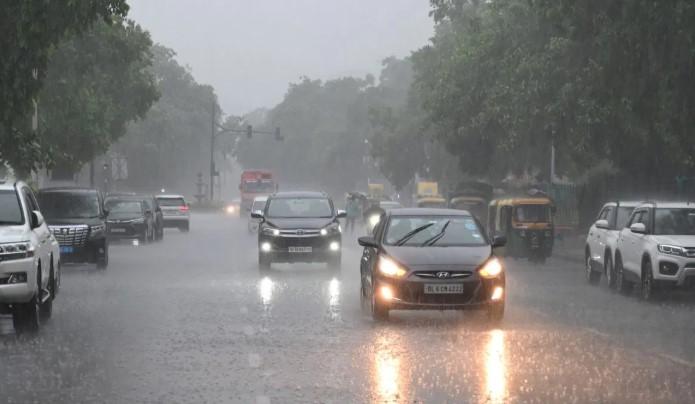THE COOLER-THAN-USUAL summer this year is likely to extend to June as well, with plenty of rainfall expected to keep the temperatures in check, the India Meteorological Department (IMD) said Tuesday.
In its second-stage forecast for the monsoon season, the IMD predicted eight per cent higher rainfall for June, compared to the long-period average (LPA).
It also made an upward revision in its forecast for the four-month June-September rainy season. The IMD said the country as whole was expected to receive rainfall that was 106 per cent of the LPA for the entire season. It had earlier predicted 105 per cent rainfall during this period.
The month of June usually brings about 166 mm of rainfall over the country . The IMD said this year, the rainfall could be eight per cent higher. But not all regions are likely to get more rainfall. The northern parts, including Jammu and Kashmir and Ladakh, and the North-East region, are likely to receive below-normal rainfall during the month.
June being the monsoon onset month, summers usually continue over north and northwest India. However, this year, the maximum temperatures are expected to remain below normal due to the associated rain. But cloudy skies could push night temperatures above normal. The IMD said the heatwave days in June would be below normal.
For the first time, the IMD released the seasonal rainfall forecast at the level of a meteorological sub-division. India is divided into 36 meteorological sub-divisions, many of them contiguous with state boundaries. States like Karnataka and Maharashtra have multiple sub-divisions while some states, such as Nagaland, Manipur, Mizoram and Tripura, form a single sub-division.
The IMD forecast said only Arunachal Pradesh, Assam and Meghalaya, and possibly Jammu and Kashmir and Ladakh, are likely to receive below normal (less than 96 per cent of LPA) rainfall during the season. Every other state is likely to get normal or above normal rainfall. Importantly, the monsoon core zone, comprising most of the rainfed agricultural areas, will also receive above-normal (more than 106 per cent of LPA) rainfall.
India receives over 75 per cent of its annual rainfall during the June-September.
“There were multiple large-scale features like the El Nino Southern Oscillation (ENSO) and Indian Ocean Dipole (IOD), among others, that remained favourable and resulted in an early arrival of the monsoon over the Kerala coast,” said M Ravichandran, Secretary, Ministry of Earth Sciences.
“Heatwave will remain limited to northwest India,” said IMD Director General Mrutyunjay Mohapatra.


